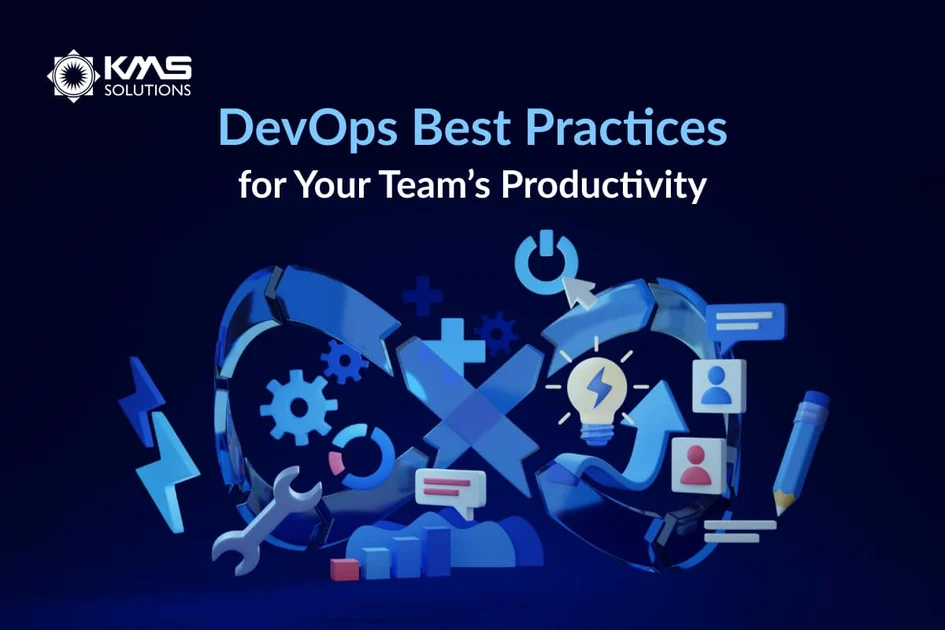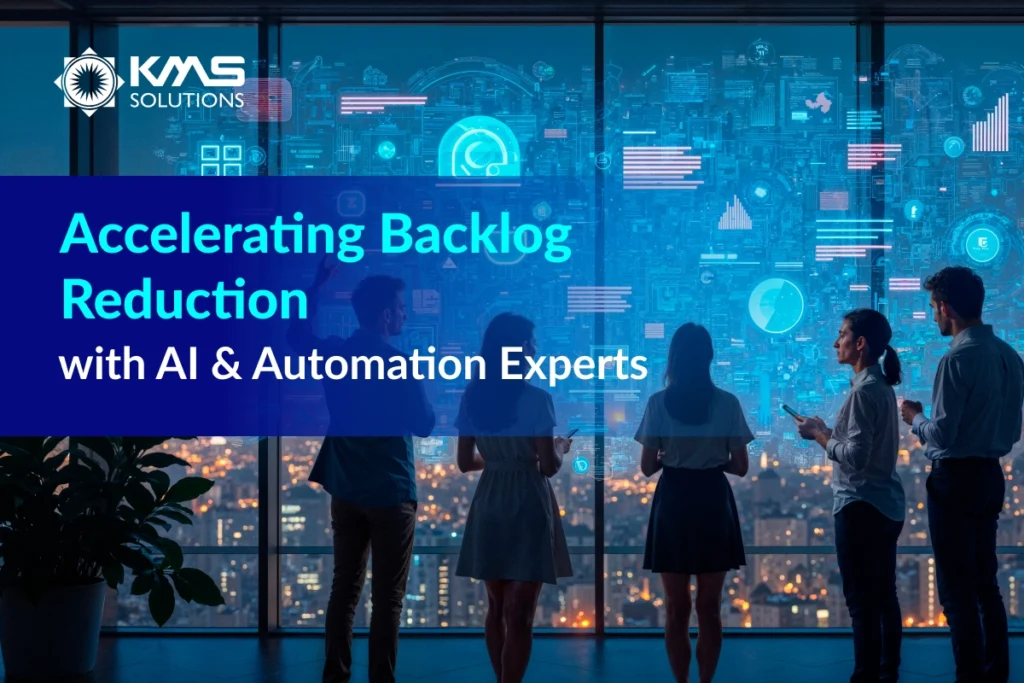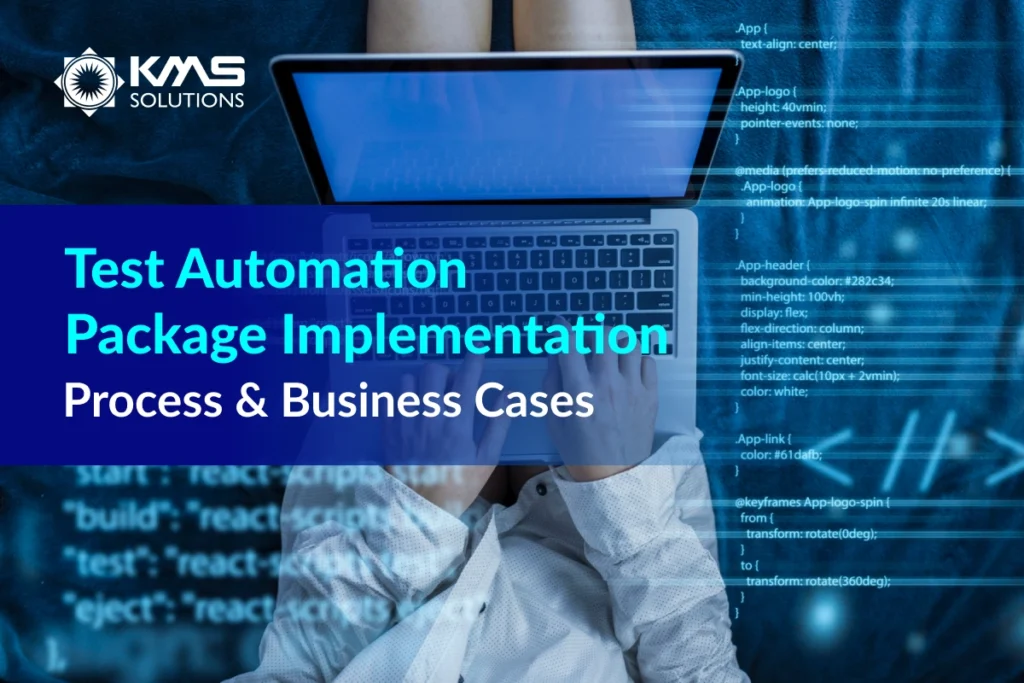According to Statista’s survey, approximately 80% of enterprises believe in the importance of DevOps in scaling software development, with 50% of them viewing DevOps as significantly critical for their businesses. DevOps can be utilised effectively to bridge the gap between software development and IT operations, bringing together these two essential but frequently misaligned endeavours.
As DevOps has constantly evolved, dedicated software development team are required to remain at the forefront of the latest practices and advancements. DevOps teams will need to concentrate on standardising development environments and automating delivery processes to improve software delivery’s anticipation, effectiveness, and security.
In this article, we will highlight some advice from DevOps leaders and practitioners from KMS Solutions to help your team boost productivity and accelerate the software development cycle.
1. Take Advantage of the Agile Approach
The Agile approach has been gaining popularity recently due to its effectiveness in dividing tasks into sprints to improve development processes, team dynamics, and many more. It enables the software development team to quickly deliver minor yet incremental innovations, spreading the groundwork for DevOps’ constant deployment strategy.
Besides DevOps and DevSecOps, almost 37% of respondents indicated using the Agile/Scrum approach for their software development, based on the research by Statista in 2022.

The relationship between DevOps and Agile is closely intertwined as they both embrace change and prioritise the business value of the software product. However, DevOps takes the principles of Agile a step further by expanding its concepts beyond the development team and involving the operations team. Therefore, by utilising Agile, the DevOps team can improve efficiency, productivity, and cross-functional collaboration.
2. Adopt Continuous Integration/ Continuous Delivery (CI/CD)
Continuous integration (CI) and continuous delivery (CD) play an essential role in enhancing overall productivity.
CI is the cornerstone of DevOps’ best practices for integrating code changes into a shared repository, allowing for automated build and testing processes. By incorporating CI, software engineers can detect and fix integration errors early in the development cycle, leading to increased overall code quality and faster deployment.
Then, CD will take over by enabling a dedicated software team to automatically deploy code changes to production-like environments after successful CI processes. This practice allows you to deliver new features and bug fixes faster while maintaining the flexibility to roll back changes if needed.
Moreover, automating tasks using CI/CD also reduces potential human errors. In modern DevOps practice, integrating automation testing into the CI/CD pipeline can help encourage a “shift-left testing” approach, increase test coverage and accelerate testing cycles.
3. Implement Automated Testing
Regular software testing is essential for producing high-quality code. Developers can leverage DevOps practices to address and resolve issues as they emerge throughout the development process.
However, manual testing can be time-consuming and prone to human errors. In contrast, incorporating test automation within a DevOps framework is worth considering to accelerate the software development lifecycle (SDLC).
Automated testing not only saves time but also enhances the accuracy and reliability of the testing process. This type of software testing reduces the necessity for testers to perform repetitive tasks, allowing them to concentrate on more intricate scenarios and crucial aspects of the software and letting the routine operations be handled efficiently by automated scripts. Additionally, it also enables faster feedback on the impact of code changes, encouraging early bug fixes and improving overall product quality.

4. Make a Switch to a Microservices Architecture
Two significant trends that have gained prominence in the enterprise are microservices and DevOps. As indicated by the engineering leader of Netflix, both practices aim to enhance the enterprise’s agility and operational efficiency.
The Microservices architecture is a software development method that entails splitting an application into smaller parts that can be deployed and maintained independently. For microservices-based systems, the DevOps strategy is ideal because it enables dedicated software development team to address individual services as separate entities—ultimately simplifying the whole SDLC process.
Microservices play a key part in DevOps by streamlining the development process, increasing productivity, and improving the application’s quality while facilitating the transition to a flexible architecture. They are also easy to expand because the DevOps team can effortlessly include a new microservice to extend the functionality without influencing the rest of the software.
5. Prioritise Customer Satisfaction
Continuous upgrades and quick delivery of new features, for instance, are among the main demands of modern SaaS customers. DevOps has the ability to accelerate the release process since it allows team members to manage code releases and produce new code at the same time. Constant feedback and close collaboration with prospects help DevOps teams deliver higher-quality products that better meet customer requirements.
However, ensuring the entire delivery pipeline is aligned with customer expectations can be challenging. It demands a shift beyond conventional DevOps objectives, followed by the adoption of innovative methodologies that integrate the user experience at each phase of the delivery process. Here’re some strategies to help you achieve this goal:
- Make software management and deployment the responsibility of the whole software delivery team, not just IT operations engineers.
- Focus on collecting customer-centric data.
- Use monitoring data to evaluate software performance trends and influence decisions.

6. Incorporate Security at the Early Phase of the SDLC
Security shouldn’t be one of the last things to consider when developing software. Recently, DevSecOps has gained significant traction as one of the prominent software development technology trends adopted by enterprises worldwide. The emergence of DevSecOps emphasises the importance of considering software and infrastructure security from the outset of the development lifecycle, incorporating security into the initial design, and seamlessly integrating it into the CI/CD pipelines.
It’s also essential to ensure that every team members are well-aware of the security and pay attention to it through the entire software lifecycle. Due to increased malicious attacks over the last few years, a strong concentration on the security of the software supply chain has been highlighted.
7. Don’t Evaluate Speed Over Quality
As one of the critical elements of DevOps’ success is velocity, many software development teams try to accelerate their processes and sacrifice the software’s quality and security. Numerous conventional DevOps metrics revolve around the speed of delivery, deployment, and value provision, but relying solely on these metrics provides an incomplete picture.
The excessive emphasis on speed can lead to overlooking the crucial aspect of delivering high-quality software. To maintain a balanced approach, it is essential to prioritize both speed and quality, incorporate significant automated testing, and refrain from compromising on quality to expedite the delivery process.
8. Build a Collaborative Culture
The primary objective of DevOps is to enhance collaboration and break down barriers between development, operations, and quality assurance teams. By doing so, the software development and delivery process can be accelerated for customers. Attaining such seamless collaboration necessitates a cultural and mindset shift across the entire engineering team, along with a shared vision or set of objectives.
To encourage collaboration and better productivity, ensure your team members also understand each other’s tasks and activities. This practice aids in comprehending the reasons behind certain actions and fosters stronger relationships among colleagues.
Both developers and operations engineers should be responsible for the software development process and work together for the common goal of meeting client expectations. In DevOps, development and operations become integral aspects of everyone’s responsibility, regardless of their team positions.
9. Use the Right Tools that DevOps Engineers are Proficient In
It’s essential to consider implementing the appropriate set of DevOps tools in each phase of the DevOps lifecycle to efficiently create high-quality software. The DevOps lifecycle encompasses planning, building, continuous integration, deployment, monitoring, operations, and continuous feedback.
By implementing the appropriate DevOps toolchain, you can ensure seamless and effective collaboration between development and operations teams throughout the software lifecycle. Here’re some examples of popular toolchains:
- By leveraging Jira software, your teams can segregate the work into smaller and more manageable tasks for faster deployment.
- Tools such as Puppet and Chef for the operation team, and Kubernetes and Docker for the developers’ team can assist you in setting up individual development environments.
- Katalon TestOps can be utilised for automation testing that unites test management, planning, execution, and quality analytics.
10. Embrace Infrastructure as Code (IaC)
Infrastructure as Code (IAC) empowers developers to provision and configure various infrastructure elements like load balancers, web servers, virtual machines (VMs), and database instances through coding.
Utilising infrastructure as code allows us to integrate the software development best practices, such as version control and continuous integration/continuous deployment (CI/CD), into the process of creating infrastructure. This approach eliminates the necessity of manual resource setup and configuration through UIs, thereby enhancing automation efforts across the entire IT environment.
Take a closer look at this practice; pushing for a self-service infrastructure model will help accelerate the process rather than adding another bottleneck of waiting for cloud infrastructure engineers to create the necessary resources.
Conclusion
To stand out from the crowd in the new DevOps-dominated world and to achieve true value through the adoption of this technology, enterprises must leverage it and related innovations in ways that allow them to create business value and enhance the customer experience.
By applying the DevOps best practices mentioned above, the development and operations teams can collaborate better to speed up the development process while still improving the performance and quality of the software.
If you’re looking for a dedicated DevOps that can help you customise software quickly without compromising on quality, the experienced, pre-vetted software engineer teams from KMS Solutions are an ideal choice for your organisation. Discuss your concerns with us and let our team do the rest!










